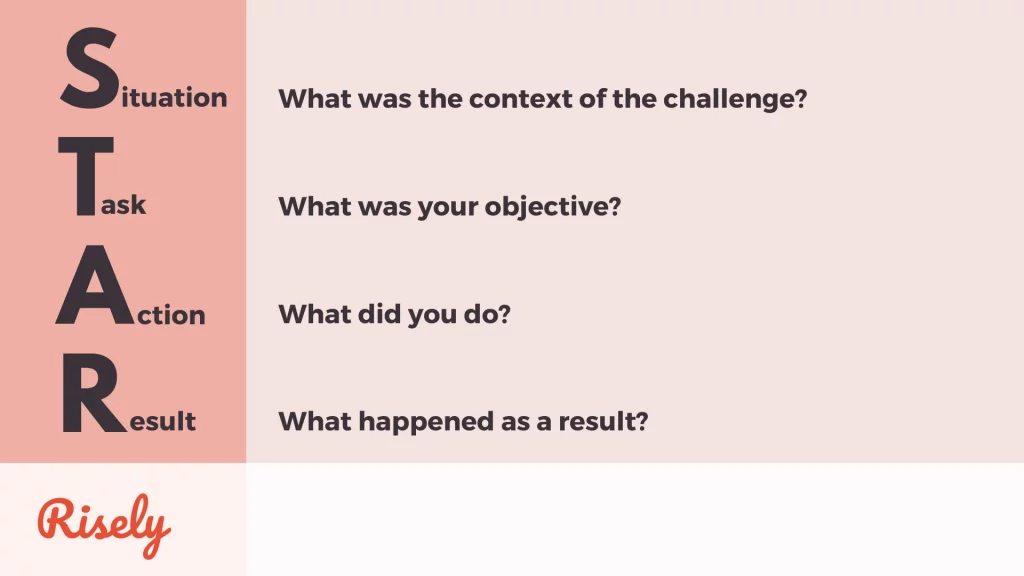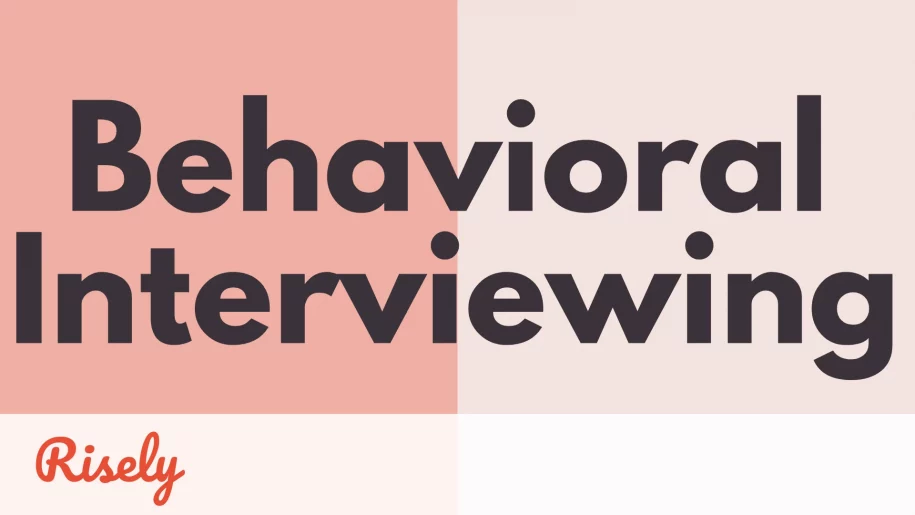The Complete Guide To Behavioral Interviewing
In this comprehensive guide, we will explore the key components of behavioral interviewing, including understanding the philosophy behind behavioral questions, crafting effective interview questions, implementing the STAR method in responses, analyzing behavioral responses, and preparing for a behavioral interview as an interviewer. Whether you are a hiring manager or a job seeker, this guide will provide you with the necessary tools and insights to navigate the behavioral interview process effectively.What is Behavioral Interviewing?
Behavioral interviewing is a technique hiring managers use to assess job candidates’ past experiences and predict their future behavior in the workplace. One of the key figures associated with the development of this technique is Dr. Paul Green. He popularized the approach through his work and writings, emphasizing that past behavior is the best predictor of future performance. This method involves asking specific behavioral interview questions that require candidates to provide examples of how they have handled various situations in the past.How does behavioral interviewing work?
The philosophy behind behavioral questions is based on the belief that past performance is a strong indicator of future behavior. Hiring managers can assess their competencies, skills, and behaviors by asking candidates to provide specific examples of how they have handled real-life situations in the workplace. The primary focus is in two areas:- Soliciting evidence of performance: During a behavioral interview, hiring managers ask specific questions that require candidates to provide examples of how they have handled real-life situations in the workplace. These questions elicit verifiable evidence about candidates’ past actions and assess their competencies and skills.
- Determining fit for the role and team: Strategically, a behavioral interview aligns its questions with the job description of your team needs. This approach allows interviewers to assess candidates’ suitability and fit for the role by focusing on the specific competencies and skills required, and by evaluating their demonstrated behaviors and actions.
How do you handle tight deadlines?
Behavioral interviewing makes it better in this way:Can you describe a time when you had to meet a tight deadline? What steps did you take to ensure you met it, and what was the outcome?
Behavioral questions aim to elicit verifiable evidence about candidates’ previous actions and performance. This approach allows interviewers to gain insights into candidates’ problem-solving abilities, communication skills, teamwork, decision-making, and other relevant competencies.What makes behavioral interviews better than other ways?
The primary goal of behavioral interviewing is to gain insight into candidates’ competencies, skills, and behaviors relevant to the job they are applying for. Interviewers can assess candidates’ ability to apply their skills and knowledge in real-life scenarios by asking candidates to provide specific examples.For hiring managers:
Hiring managers use behavioral interviewing to gather verifiable evidence about candidates’ past actions and performance. You can assess candidates’ suitability for the job and determine if they possess the necessary skills and competencies to succeed in the role.For candidates:
Behavioral interviewing helps you return to the concrete work you have done and demonstrate skills with real-life examples in many areas. Getting behavioral answers right also shows you have a structured approach to working that can translate into multiple areas with the right training and development opportunities. Overall, behavioral interviewing is a valuable tool in the recruitment process that allows hiring managers to gain deeper insights into candidates’ past performance and assess their potential for success in the role they are applying for.How are Behavioral Interview Questions Made?
Effective behavioral interview questions are crucial for assessing candidates’ past experiences and predicting their future behavior. These questions should focus on specific situations, actions, and outcomes to gather verifiable evidence about candidates’ competencies and skills. When crafting behavioral interview questions, you need to focus on aligning them with the job description and the core competencies required for the role.Structuring Questions for Different Roles
When structuring behavioral interview questions for different roles, hiring managers should consider the specific competencies and skills required for each position. Here are some examples to build questions based on different roles that you can try:- For a leadership role: Ask candidates to provide examples of how they have demonstrated their leadership skills, managed teams, and achieved desired outcomes.
- For a customer service role: Ask candidates to share experiences of dealing with difficult customers, resolving conflicts, and providing exceptional customer service.
- For a technical role: Ask candidates to describe their problem-solving abilities, their approach to complex technical challenges, and their ability to work in a team.
Examples of Effective Behavioral Questions
Effective behavioral interview questions require candidates to provide specific examples of their past experiences. Here are some examples of effective behavioral questions that you can start with:- Tell me about a time when you had to resolve a conflict within your team. How did you approach the situation, and what was the outcome?
- Describe a time when you had to adapt to unexpected changes in a project. How did you handle the situation, and what was the result?
- Share an experience where you had to work under pressure and meet tight deadlines. How did you manage your time, and what was the outcome?
- Mastering the Top 30 Behavioral Questions in Interviews
- 6 Communication Behavioral Interview Questions to Find Your Dream Job
- The Ultimate Guide to Situational and Behavioral Interview Questions
Implementing the STAR Method in Responses
The STAR method is a structured approach that job candidates can use to provide concise and detailed responses during a behavioral interview. The acronym STAR stands for Situation, Task, Action, and Result.
Let’s understand the star method with an example:
- Hypothetical question: “Tell me how you would handle a conflict with a team member.”
- Situation: Describe a situation in which a conflict arises with a team member.
- Task: Explain the task or challenge of resolving the conflict.
- Action: Describe the actions you would take to address the conflict.
- Result: Discuss the expected or desired outcome of resolving the conflict.
Sample answer for STAR method:
In my previous role as a project manager, I encountered a conflict with a team member who consistently missed deadlines. This caused delays for the entire project and created tension within the team.
My task was to address the issue directly with the team member to understand the root cause of the missed deadlines and find a solution that would allow the project to get back on track without causing further disruption.
I scheduled a private meeting with the team member to discuss the issue. During the meeting, I used active listening techniques to understand their perspective and any challenges they were facing. It turned out that they were struggling with an excessive workload and unclear priorities. I then worked with them to re-prioritize their tasks and provided additional support by reallocating some of their duties to other team members who had the capacity to help. Additionally, I set up regular check-ins to monitor progress and ensure they felt supported.
As a result of this intervention, the team member was able to meet their deadlines consistently. The project’s timeline improved significantly, and the overall team dynamics became more positive and collaborative. The team member also appreciated the support and felt more engaged with their work. This experience reinforced the importance of open communication and proactive problem-solving in managing team conflicts.
How to analyze behavioral interviewing answers?
When analyzing behavioral responses, hiring managers should pay attention to candidates’ relevant competencies. You should also look for red flags and positive indicators that can help make informed hiring decisions.- Finding competencies: When identifying competencies through answers, look for specific examples and evidence of candidates’ past performance. Assess how candidates have applied their skills and knowledge in real-life situations and evaluate their effectiveness in achieving desired outcomes, as we saw in the sample answer above.
- Spotting red flags: Red flags may include inconsistent or vague responses, a lack of specific examples, or difficulty in demonstrating key competencies. These indicators suggest that candidates may not possess the necessary skills or experience required for the job.
Try looking for red flags in the sample answer below:
There was a time when I had a conflict with a team member who disagreed with my approach to a project. We had different ideas on how to move forward, and it created some tension. My task was to figure out how to deal with this disagreement.
I decided to stick to my approach of working as I new it was better. The conflict would eventually resolve itself. I didn’t really see the point in discussing it because I was confident in my approach. Sometimes, I would just send emails instead of talking to them directly so I wouldn’t have to deal with the confrontation. The conflict didn’t really get resolved, but I managed to finish my part of the project. The team member and I continued to work independently without much interaction. I think it was fine because we both got our work done, even if we didn’t agree.
What are the signs of a bad behavioral interview answer?
- Vagueness: The description of the situation is too vague. It doesn’t provide enough context about the nature of the conflict or why it was significant, making it hard to understand the full scope of the issue.
- Lack of Clarity: The task is not clearly defined. It does not specify any concrete objectives or expectations the candidate needed to meet to handle the conflict.
- Arrogance: The candidate’s confidence in their approach without considering the team member’s perspective shows a lack of openness and collaboration.
- Short-Term Focus: The candidate only focuses on finishing their part of the project, ignoring the broader implications for team performance and cohesion.
- Lack of Reflection: There is no reflection on what could have been done better or how to improve future conflict resolution efforts.
Conclusion
In essence, mastering the art of behavioral interviewing can significantly enhance your recruitment process by revealing a candidate’s true potential and suitability for the role. You can uncover valuable insights by understanding the philosophy behind behavioral questions, crafting tailored inquiries, implementing the STAR method effectively, and analyzing responses meticulously. Whether you are an interviewer aiming to select the best candidate or a candidate preparing to ace the interview, equipping yourself with the knowledge and skills outlined in this guide will undoubtedly elevate your interviewing experience to new heights.Ace interviews with strong communication skills.
Master the art of effective communication by reviewing your skills with a free assessment now.
Other Related Blogs


